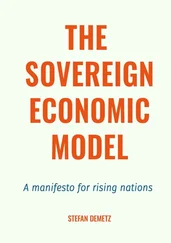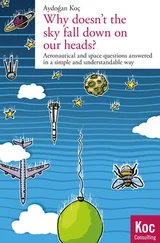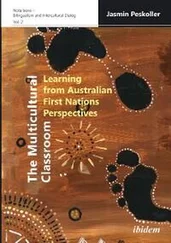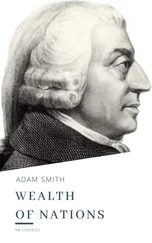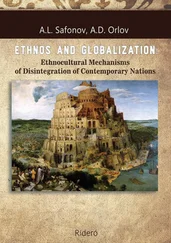The dual economy of South Africa did come to an end in 1994. But not because of the reasons that Sir Arthur Lewis theorized about. It was not the natural course of economic development that ended the color bar and the Homelands. Black South Africans protested and rose up against the regime that did not recognize their basic rights and did not share the gains of economic growth with them. After the Soweto uprising of 1976, the protests became more organized and stronger, ultimately bringing down the Apartheid state. It was the empowerment of blacks who managed to organize and rise up that ultimately ended South Africa’s dual economy in the same way that South African whites’ political force had created it in the first place.
DEVELOPMENT REVERSED
World inequality today exists because during the nineteenth and twentieth centuries some nations were able to take advantage of the Industrial Revolution and the technologies and methods of organization that it brought while others were unable to do so. Technological change is only one of the engines of prosperity, but it is perhaps the most critical one. The countries that did not take advantage of new technologies did not benefit from the other engines of prosperity, either. As we have shown in this and the previous chapter, this failure was due to their extractive institutions, either a consequence of the persistence of their absolutist regimes or because they lacked centralized states. But this chapter has also shown that in several instances the extractive institutions that underpinned the poverty of these nations were imposed, or at the very least further strengthened, by the very same process that fueled European growth: European commercial and colonial expansion. In fact, the profitability of European colonial empires was often built on the destruction of independent polities and indigenous economies around the world, or on the creation of extractive institutions essentially from the ground up, as in the Caribbean islands, where, following the almost total collapse of the native populations, Europeans imported African slaves and set up plantation systems.
We will never know what the trajectories of independent city-states such as those in the Banda Islands, in Aceh, or in Burma (Myanmar) would have been without the European intervention. They may have had their own indigenous Glorious Revolution or slowly moved toward more inclusive political and economic institutions based on growing trade in spices and other valuable commodities. But this possibility was removed by the expansion of the Dutch East India Company. The company stamped out any hope of indigenous development in the Banda Islands by carrying out its genocide. Its threat also made the city-states in many other parts of Southeast Asia pull back from commerce.
The story of one of the oldest civilizations in Asia, India, is similar, though the reversing of development was done not by the Dutch but by the British. India was the largest producer and exporter of textiles in the world in the eighteenth century. Indian calicoes and muslins flooded the European markets and were traded throughout Asia and even eastern Africa. The main agent that carried them to the British Isles was the English East India Company. Founded in 1600, two years before its Dutch version, the English East India Company spent the seventeenth century trying to establish a monopoly on the valuable exports from India. It had to compete with the Portuguese, who had bases in Goa, Chittagong, and Bombay, and the French with bases at Pondicherry, Chandernagore, Yanam, and Karaikal. Worse still for the East India Company was the Glorious Revolution, as we saw in chapter 7. The monopoly of the East India Company had been granted by the Stuart kings and was immediately challenged after 1688, and even abolished for over a decade. The loss of power was significant, as we saw earlier (this page–this page), because British textile producers were able to induce Parliament to ban the import of calicoes, the East India Company’s most profitable item of trade. In the eighteenth century, under the leadership of Robert Clive, the East India Company switched strategies and began to develop a continental empire. At the time, India was split into many competing polities, though many were still nominally under the control of the Mughal emperor in Delhi. The East India Company first expanded in Bengal in the east, vanquishing the local powers at the battles of Plassey in 1757 and Buxar in 1764. The East India Company looted local wealth and took over, and perhaps even intensified, the extractive taxation institutions of the Mughal rulers of India. This expansion coincided with the massive contraction of the Indian textile industry, since, after all, there was no longer a market for these goods in Britain. The contraction went along with de-urbanization and increased poverty. It initiated a long period of reversed development in India. Soon, instead of producing textiles, Indians were buying them from Britain and growing opium for the East India Company to sell in China.
The Atlantic slave trade repeated the same pattern in Africa, even if starting from less developed conditions than in Southeast Asia and India. Many African states were turned into war machines intent on capturing and selling slaves to Europeans. As conflict between different polities and states grew into continuous warfare, state institutions, which in many cases had not yet achieved much political centralization in any case, crumbled in large parts of Africa, paving the way for persistent extractive institutions and the failed states of today that we will study later. In a few parts of Africa that escaped the slave trade, such as South Africa, Europeans imposed a different set of institutions, this time designed to create a reservoir of cheap labor for their mines and farms. The South African state created a dual economy, preventing 80 percent of the population from taking part in skilled occupations, commercial farming, and entrepreneurship. All this not only explains why industrialization passed by large parts of the world but also encapsulates how economic development may sometimes feed on, and even create, the underdevelopment in some other part of the domestic or the world economy.
10.
THE DIFFUSION OF PROSPERITY
HONOR AMONG THIEVES
EIGHTEENTH-CENTURY ENGLAND—or more appropriately, Great Britain after the 1707 union of England, Wales, and Scotland—had a simple solution for dealing with criminals: out of sight, out of mind, or at least out of trouble. They transported many to penal colonies in the empire. Before the War of Independence, the convicted criminals, convicts, were primarily sent to the American colonies. After 1783 the independent United States of America was no longer so welcoming to British convicts, and the authorities in Britain had to find another home for them. They first thought about West Africa. But the climate, with endemic diseases such as malaria and yellow fever, against which Europeans had no immunity, was so deadly that the authorities decided it was unacceptable to send even convicts to the “white man’s graveyard.” Their next option was Australia. Its eastern seaboard had been explored by the great seafarer Captain James Cook. On April 29, 1770, Cook landed in a wonderful inlet, which he called Botany Bay in honor of the rich species found there by the naturalists traveling with him. This seemed like an ideal location to British government officials. The climate was temperate, and the place was as far out of sight and mind as could be imagined.
A fleet of eleven ships packed with convicts was on its way to Botany Bay in January 1788 under the command of Captain Arthur Phillip. On January 26, now celebrated as Australia Day, they set up camp in Sydney Cove, the heart of the modern city of Sydney. They called the colony New South Wales. On board one of the ships, the Alexander , captained by Duncan Sinclair, were a married couple of convicts, Henry and Susannah Cable. Susannah had been found guilty of stealing and was initially sentenced to death. This sentence was later commuted to fourteen years and transportation to the American colonies. That plan fell through with the independence of the United States. In the meantime, in Norwich Castle Jail, Susannah met and fell in love with Henry, a fellow convict. In 1787 she was picked to be transported to the new convict colony in Australia with the first fleet heading there. But Henry was not. By this time Susannah and Henry had a young son, also called Henry. This decision meant the family was to be separated. Susannah was moved to a prison boat moored on the Thames, but the word got out about this wrenching event and reached the ears of a philanthropist, Lady Cadogan. Lady Cadogan organized a successful campaign to reunite the Cables. Now they were both to be transported with young Henry to Australia. Lady Cadogan also raised £20 to purchase goods for them, which they would receive in Australia. They sailed on the Alexander , but when they arrived in Botany Bay, the parcel of goods had vanished, or at least that is what Captain Sinclair claimed.
Читать дальше




